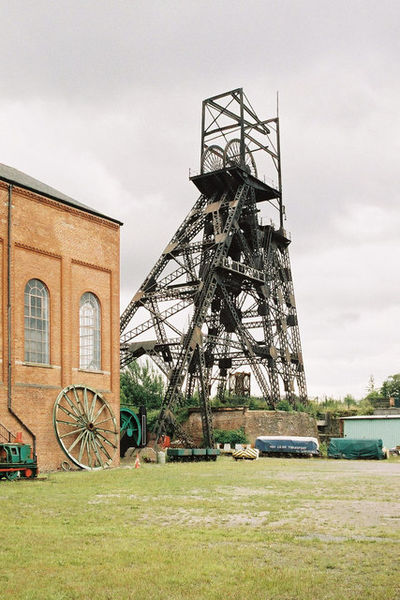From the Industrial Revolution until the 1970s, the north of England was known for its coal mines. In fact, the United Kingdom has a number of large onshore coal fields, and in many areas, mining these deposits became the major employment opportunity for local people. The village of Astley, in Greater Manchester, was one of these. The last deep mine to be sunk in this area of the Manchester coal field was the Astley Green Colliery, which played a significant part of the industry of Astley for well over 60 years. The mine workings were begun in 1908 by the Clifton and Kersley Coal Company, a subordinate of Pilkington Colliery Company.

The mining company began to look for new areas to mine as reserves at the nearby Irwell Valley became depleted, at a time when demand for coal was rapidly increasing. Astley Green was chosen as a site to sink a test borehole, partly due to its proximity to the Bridgewater Canal, and the mining company were not disappointed. The Clifton and Kersley Coal Company obtained the mineral rights to 700 acres of land at Astley Green, which included a large area of a peat bog known as Chat Moss.
The sediment that formed this coal was laid down more 300 million years ago, during the Carboniferous Period. The vein was found to slope downwards which meant the deepest mine eventually reached 3,360 feet.

Their rough estimation was that around 140 million tons of coal lay untouched right underneath Chat Moss. With such stunning predictions of a shiny future, they set forth with the sinking of the first shaft. Because of the prevailing boggy conditions, progress was hampered by quicksand and the ingress of ground water. In the end, a specialist German mechanical engineering company, Haniel & Lueg, was contracted to dig the underground workings, and coal extraction began in April 1910.

There were two shafts, dug to depths of 890 yards and 833 yards. The mine joined up to or intersected with several nearby older pits: Arley mine, the Worsley Four Foot mine, Crombouke mine, and Rams mine.

Deep mining is not without its dangers. One of the main issues encountered by coal pit mines was the inevitable presence of firedamp; this is the name given to the natural flammable gases, especially methane, which occur where certain types of coal is formed. “Damp” comes from the German word meaning “vapors” and is used to refer to the various forms of hazardous gases that can be found in this type of coal mine. The main way to reduce the risk of explosion of firedamp was to ensure the pit was adequately ventilated, which presented some remarkable engineering challenges for a mine as deep as Astley Green.

Working at these depths requires plenty of safety regulations, but accidents still happened. And, at around 2 am on June 7, 1939, disaster struck at Astley Green Colliery. There was an explosion of firedamp that had men fighting with hell-like fire, hundreds of feet below ground, for hours on end.

The mine pits were vast in those days, and the explosion happened about a mile from the lift shaft. Hurriedly, the manager, J.H Hewitt, was called for to oversee the situation. Astley Green Colliery employed 2,000 men, and 1,00 of these were working the night shift at the time of the explosion. The pit was quickly evacuated, but a number of miners were trapped inside. They were overwhelmed by smoke and noxious gases, and the valiant rescue attempt by the Mines Rescue Service and a group of the miners, including Mr. Hewitt, was hampered by a series of secondary explosions that were triggered by the initial blast.

The aftermath of the whole tragedy was titanic collateral damage, five dead miners, among whom was the manager, and a number of others wounded. Today, this colliery is houses a museum that has on display some of the equipment used throughout the history of coal mining, including Europe’s largest steam winding engine. It also serves to keep alive the memory of the five daring miners.
